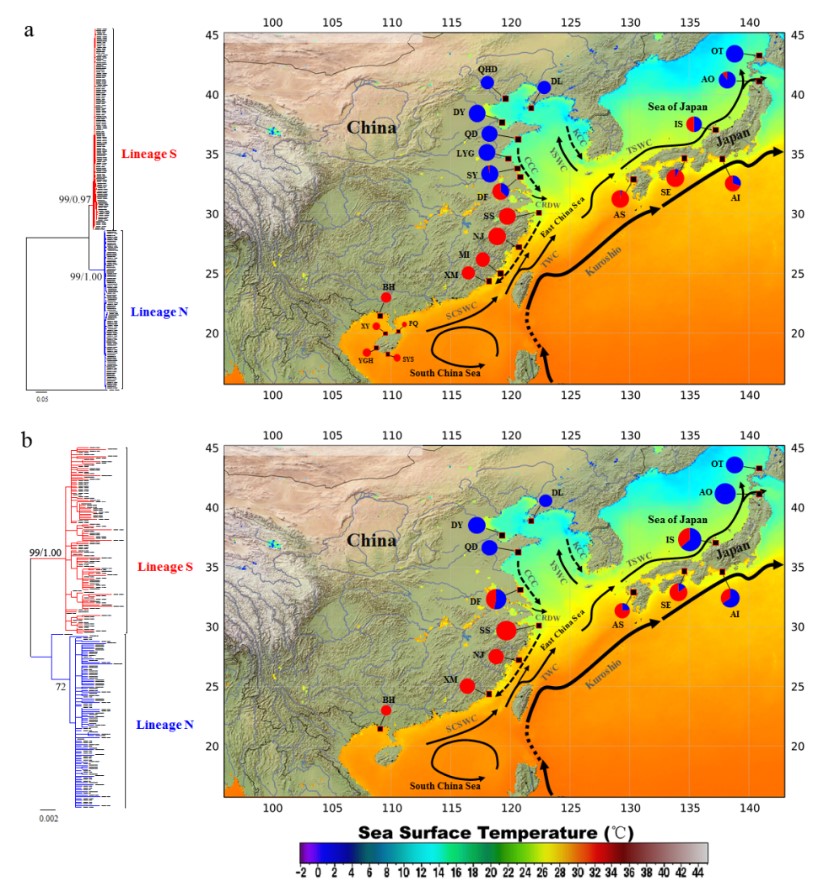Marine biodiversity may have always been underestimated, and one important hidden source of diversity is the phenomenon of morphologically indistinguishable cryptic or sibling species. By integrating mitochondrial and nuclear evidence, researchers from Institute of Oceanology, Chinese Academy of Sciences revealed cryptic diversity and potential hybridization in the Japanese mantis shrimp Oratosquilla oratoria in the Northwestern (NW) Pacific. Recently, these findings were published in Nature Publication Group: Scientific Reports entitled “Cryptic diversity in the Japanese mantis shrimp Oratosquilla oratoria (Crustacea: Squillidae): Allopatric diversification, secondary contact and hybridization” (DOI: 10.1038/s41598-017-02059-7).
Oratosquilla oratoria (De Haan, 1844) is one of the economically important stomatopod species because of its abundance and wide consumer acceptance. Cryptic speciation might occur in this species because of its wide distribution and benthic habitat. Both mitochondrial and nuclear gene genealogies revealed two cryptic species in this morphotaxon. One cryptic species is restricted to cold waters with a distribution range corresponding to temperate affinities, while the other dwelled warm waters influenced by the Kuroshio Current. Furthermore, the results revealed recent hybridization event of the two cryptic species occurred in sympatric areas. This study highlighted the interactive role of paleoclimate changes and environmental heterogeneity in driving genetic diversification of coastal species in the NW Pacific.
Corresponding author: Zhongli Sha (shazl@qdio.ac.cn), Institute of Oceanology, CAS

Fig. Sample locations and relative frequency of two genetic lineages inferred from mtDNA COI (a) and nrDNA ITS (b). The distributional ranges of the two O. oratoria cryptic species closely parallel the spatial distribution pattern of Sea Surface Temperature (SST) in the NW Pacific governed by the oceanic currents system in this region.

